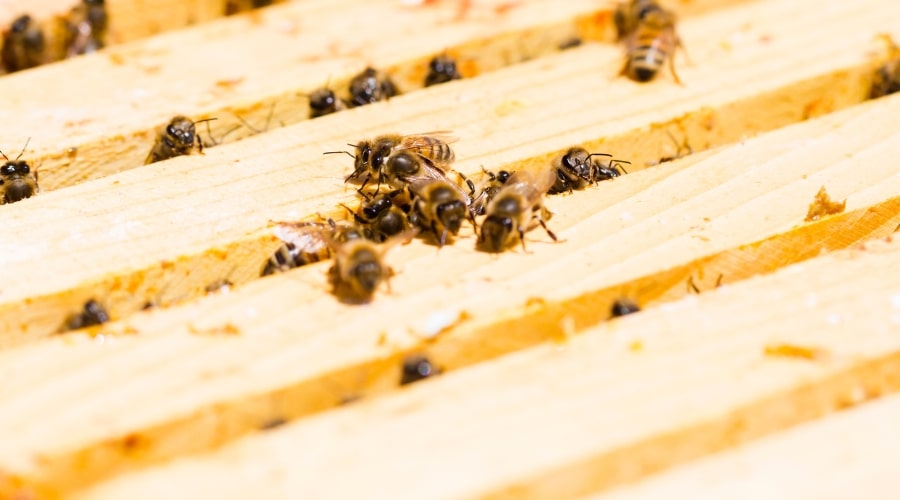Mites are a serious threat to your hive and require diligent monitoring and management. The Varroa destructor mite is particularly damaging, weakening colonies and spreading diseases. Protecting your hive involves proactive steps to keep these pests under control.
Identifying Mite Infestations
Varroa mites are small, reddish-brown parasites visible to the naked eye. They attach to adult bees or larvae, feeding on their fat reserves. This weakens the bees and makes them more vulnerable to diseases.
Signs of a mite infestation include:
- Deformed wings on adult bees
- Reduced bee population
- Spotty brood patterns
Regular hive inspections are crucial. Use sticky boards or alcohol washes to monitor mite levels. Checking every four to six weeks helps you catch infestations early.
Preventative Measures
Taking preventative action reduces the chances of mites overwhelming your hive. Focus on maintaining a healthy colony and creating an environment less favorable to mites.
-
Choose Resistant Bees: Some bee strains, such as Russian or VSH (Varroa Sensitive Hygiene) bees, show natural mite resistance.
-
Practice Hive Rotation: Moving brood frames disrupts the mite’s reproductive cycle. Regular rotation also helps detect problems.
-
Maintain Hive Hygiene: Remove old comb regularly. Mites often reproduce in brood cells, especially in older comb.
Treatment Options
If mite levels exceed safe thresholds, begin treatment immediately. Use one or more of the following methods based on the infestation’s severity and timing:
-
Chemical Treatments:
- Use miticides like oxalic acid or formic acid. Follow instructions carefully to avoid harming your bees.
- Apply treatments during broodless periods for maximum effectiveness.
-
Non-Chemical Methods:
- Screened Bottom Boards: These allow mites to fall out of the hive and prevent them from reattaching.
- Drone Brood Removal: Mites prefer drone brood. Removing and freezing drone comb reduces mite populations.
-
Biotechnical Methods:
- Powdered sugar dusting encourages bees to groom each other, dislodging mites.
- Heat treatments target mites while sparing bees. Use specialized equipment for safe application.
Monitoring After Treatment
Always recheck mite levels after completing a treatment. This ensures the method was effective and helps determine if additional action is needed. Continue monitoring throughout the season, as mites can return quickly.
Supporting Hive Health
Healthy colonies are better equipped to manage pests. Feed your bees properly and provide adequate ventilation. Reduce stress by avoiding unnecessary hive disturbances.
By staying vigilant and addressing mites promptly, you protect your hive and improve its chances of thriving.


